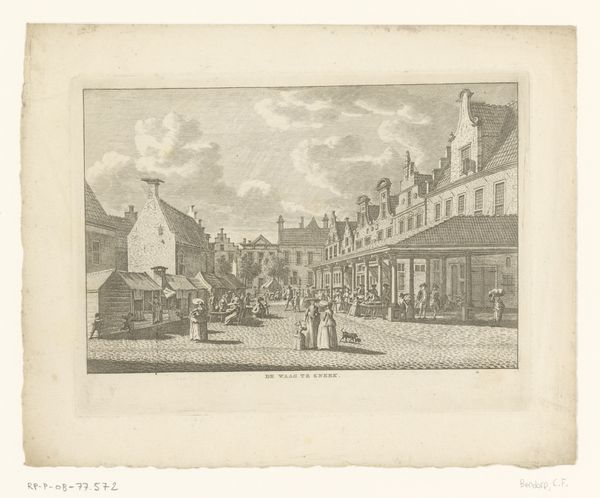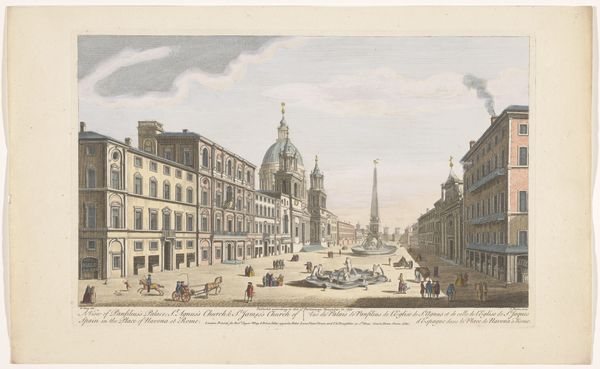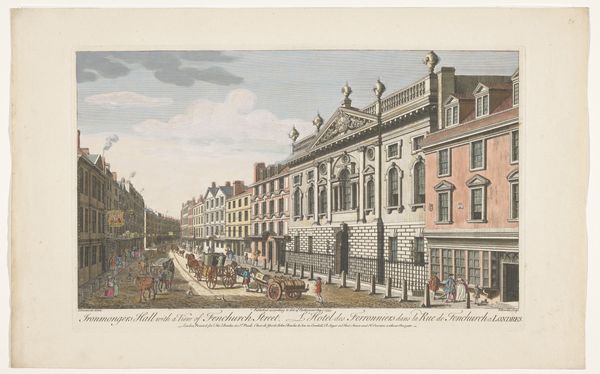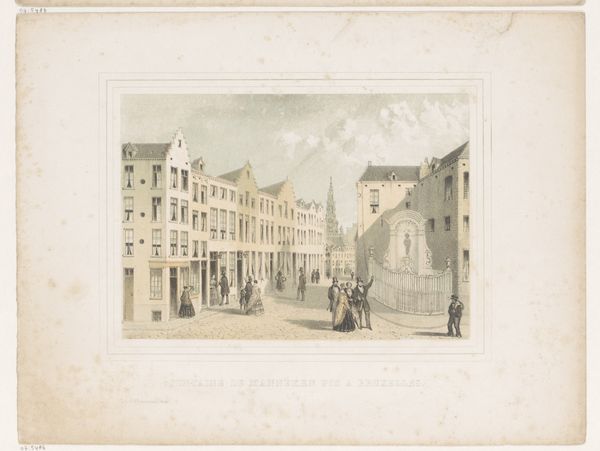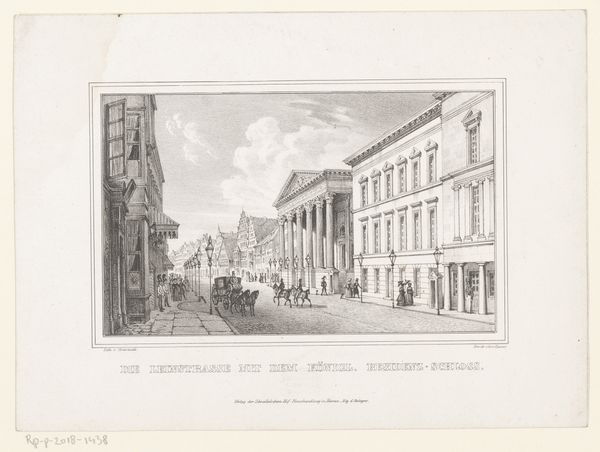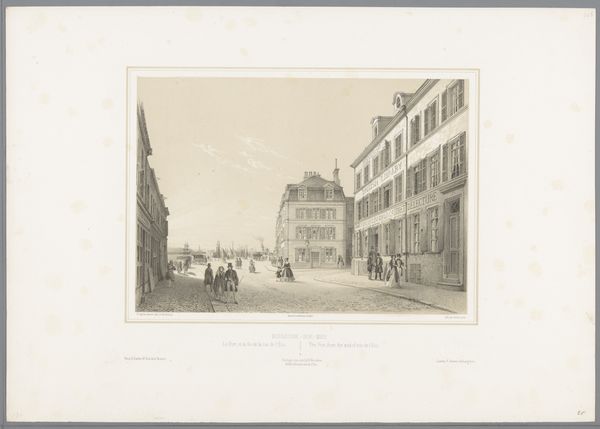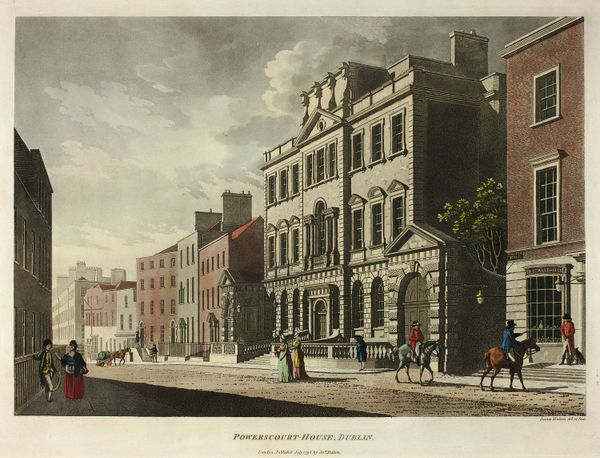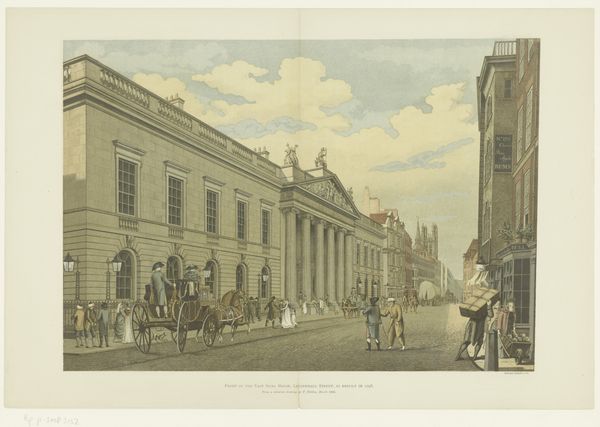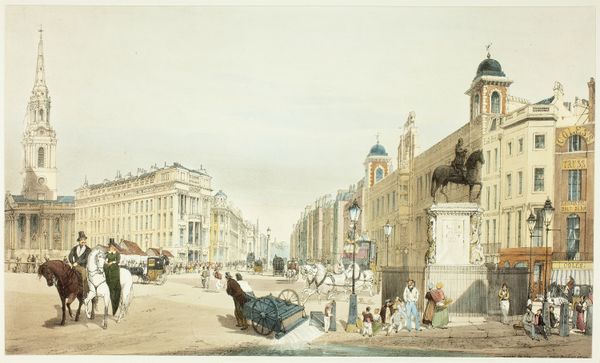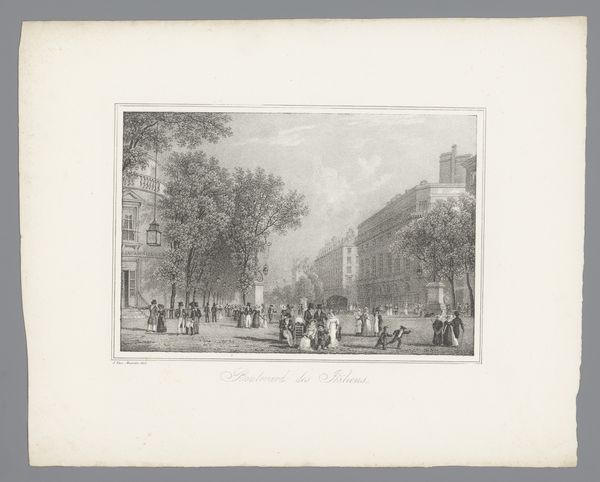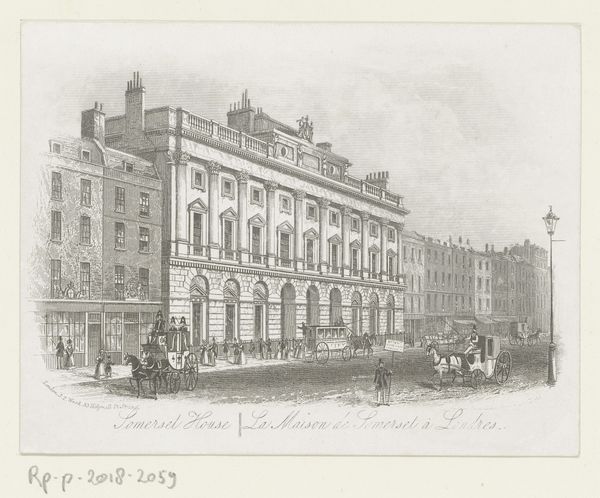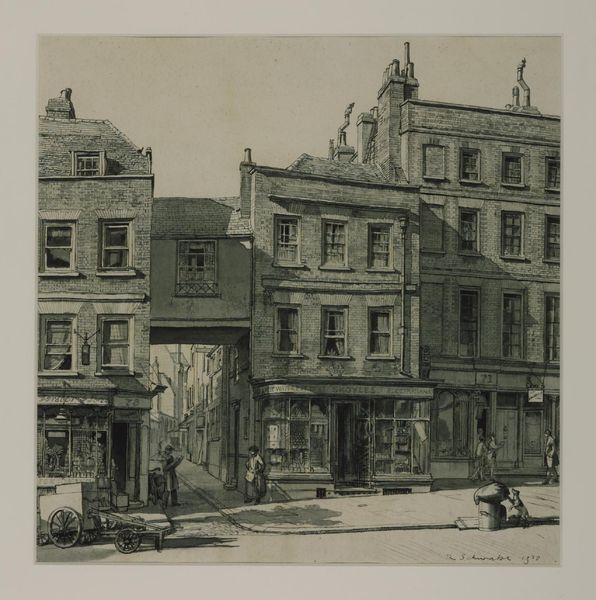
Gezicht op de Leadenhall Street, met rechts het East India House, te Londen after 1800
0:00
0:00
drawing, painting, watercolor, architecture
#
drawing
#
painting
#
landscape
#
watercolor
#
architecture drawing
#
cityscape
#
watercolour illustration
#
history-painting
#
academic-art
#
street
#
architecture
Dimensions: height 373 mm, width 550 mm
Copyright: Rijks Museum: Open Domain
Editor: So, this piece is a watercolor and drawing titled "View of Leadenhall Street, with the East India House on the Right, in London," created after 1800 by William H. Griggs. It gives a really ordered and composed view of this very busy street scene. I’m curious to learn what stands out to you about this cityscape? Curator: For me, it’s about interrogating the very materiality of its creation, the watercolor itself. How does the process of watercoloring – the layering, the specific paper it is on - contribute to the almost dreamlike quality, while still managing to portray a precise, even rigid, architectural scene? I wonder about Griggs' choice. Editor: Dreamlike is definitely a great description, there's a real softness, almost like a filter. Curator: Precisely. Think about the societal context. The East India House wasn’t just architecture, but the administrative heart of colonial exploitation. By using watercolor – a 'domestic' medium associated with the leisurely classes – is Griggs perhaps softening or even obscuring the harsh realities of the company’s activities and the extraction of resources? Consider too, the labor required to produce not just the artwork but the commodities shipped by the East India Company and stored along that street. Editor: That's a perspective shift I hadn’t considered. So, the delicate nature of the materials kind of stands in contrast to the… weight of what the company was responsible for. Curator: Exactly! This watercolor wasn't just documenting a place; it's also a product of a system where aesthetics are employed in conjunction with a brutal commercial enterprise. Is Griggs offering a critical gaze, or complicit through the medium itself? Editor: That's such an interesting tension. I'll never see watercolor landscapes the same way! Curator: Good, that's the point of engaging in a Materialist practice; hopefully the ways of making prompt one to ask, "Why _this_ way?".
Comments
No comments
Be the first to comment and join the conversation on the ultimate creative platform.
